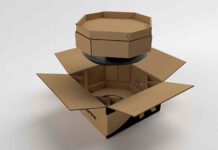
WHICH technologies can packaging manufacturers use to effectively help their customers fight product piracy? Recent months have seen a succession of relevant events and announcements.
Members of the Global Packaging Alliance (GPA) discussed the issue at their annual meeting held in January in Dubai.
According to the latest reports, EU customs officials confiscated nearly 40 million counterfeit products in 2012, said the GPA.
With this in mind, the GPA annual meeting addressed new security technologies and track & trace solutions for packaging production. “GPA members want to offer their globally-active customers standardised, highly effective and cost-efficient ways to protect their products,” explained Hans-Christian Bestehorn, GPA spokesman and CEO of the Rlc Packaging Group, a GPA charter member.
Counterfeiting was also on the agenda at the Making Cosmetics event on 25 and 26 March in Coventry.
Medica Packaging, a company within Benson Group, a UK printed folding carton manufacturer, described the use of a multi-layered method where a number of both covert and overt anti-counterfeit measures are used together for added security. For example, a holographic strip might be used alongside colour shifting inks, track-and-trace numbering, and micro-text. For counterfeiters to spot, understand and replicate all of these becomes an onerous and expensive task – hopefully sufficiently complex to make them move on to another, easier target. The trade off for the brand owner is obviously one of cost versus security.
A range of detectable polymer technologies was announced in early March by Celanese, a US technology and specialty materials company, which can help original equipment manufacturers (OEMs) and suppliers reduce the risk of counterfeits in automotive part, medical devices, packaging and consumer electronics.
“These technologies are especially important today in light of several recalls due to inferior and counterfeit materials”, said Stefan Kutta, global director, Celanese Transportation industry.
The anti-counterfeiting technologies include: Unambiguous part analysis based on unique engineered material additives; ultraviolet-detectable technologies for enhanced quality control that are primarily used in the production of complex medical devices; and printing and laser marking technologies that allow Celanese engineered materials to be marked with a visible barcode, such as manufacturer, batch number and raw material/batch. Other anti-counterfeiting technologies include X-ray detection, micro-tagging — invisible color coded small particles — that can be identified via microscopy (10x magnification), and optical verifiable pigments/nanoparticles that are an invisible marker or “optical fingerprint.”













